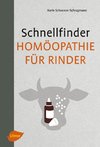
-
 Anglický jazyk
Anglický jazyk
Sand fly and control
Autor: Mohamed Abdel-Raheem
Phlebotomine sand flies are major biting pests of man and are the vectors of several viruses, the bacterium Bartonella bacilliformis and most importantly the protozoan parasites that cause leishmaniasis. Worldwide, there are an estimated 2 million new cases... Viac o knihe
Na objednávku, dodanie 2-4 týždne
57.33 €
bežná cena: 63.70 €
O knihe
Phlebotomine sand flies are major biting pests of man and are the vectors of several viruses, the bacterium Bartonella bacilliformis and most importantly the protozoan parasites that cause leishmaniasis. Worldwide, there are an estimated 2 million new cases of leishmaniasis annually, and 12 million people are currently believed to be infected (WHO 2006). Throughout North Africa, the Middle East and Southwest Asia, Phlebotomus papatasi is the primary vector of Leishmania major, the causative agent of zoonotic cutaneous leishmaniasis (ZCL). While larvicides are commonly used to control mosquitoes and many other flies of medical and veterinary importance, there is no current use of larvicides for phlebotomine sand fly control. In arid and semi-arid foci, P. papatasi exhibits a close association with several burrowing rodent reservoirs of L. major (Neronov and Gunin 1971). In ZCL foci in the Old World, rodent burrows are considered to be the primary immature habitats for P. papatasi, but introducing an insecticide into the burrows is generally precluded by the length and complexity of the tunnels which comprise the burrows (Seyedi-Rashti and Nadim 1973, Karapet'ian et al.1983.
- Vydavateľstvo: LAP LAMBERT Academic Publishing
- Rok vydania: 2020
- Formát: Paperback
- Rozmer: 220 x 150 mm
- Jazyk: Anglický jazyk
- ISBN: 9786202682084

 Nemecký jazyk
Nemecký jazyk 









